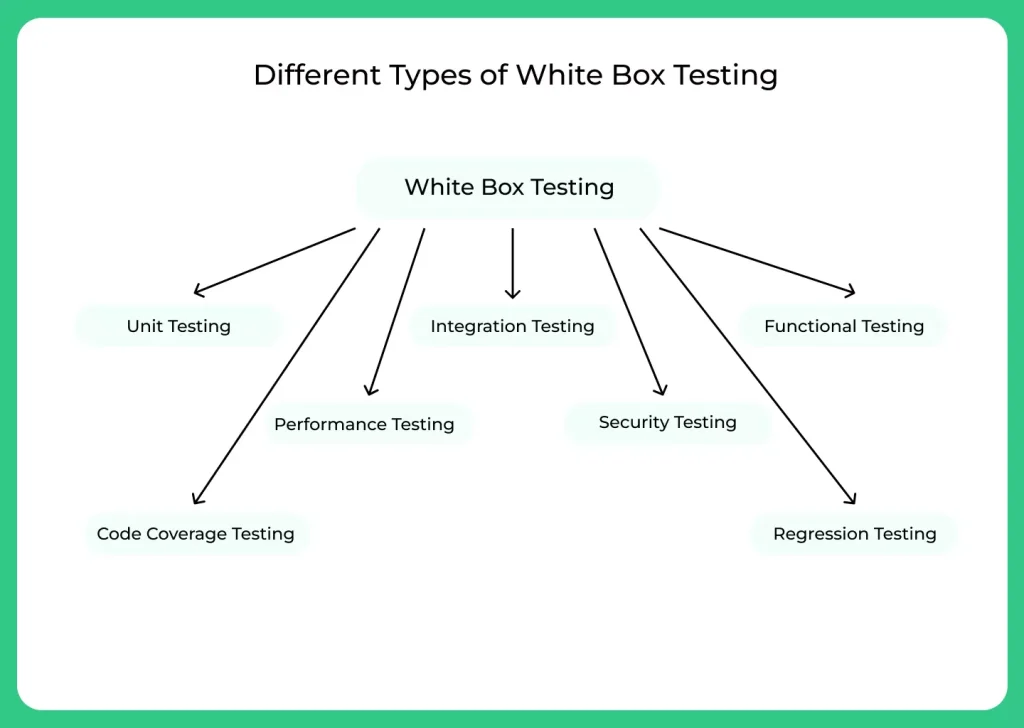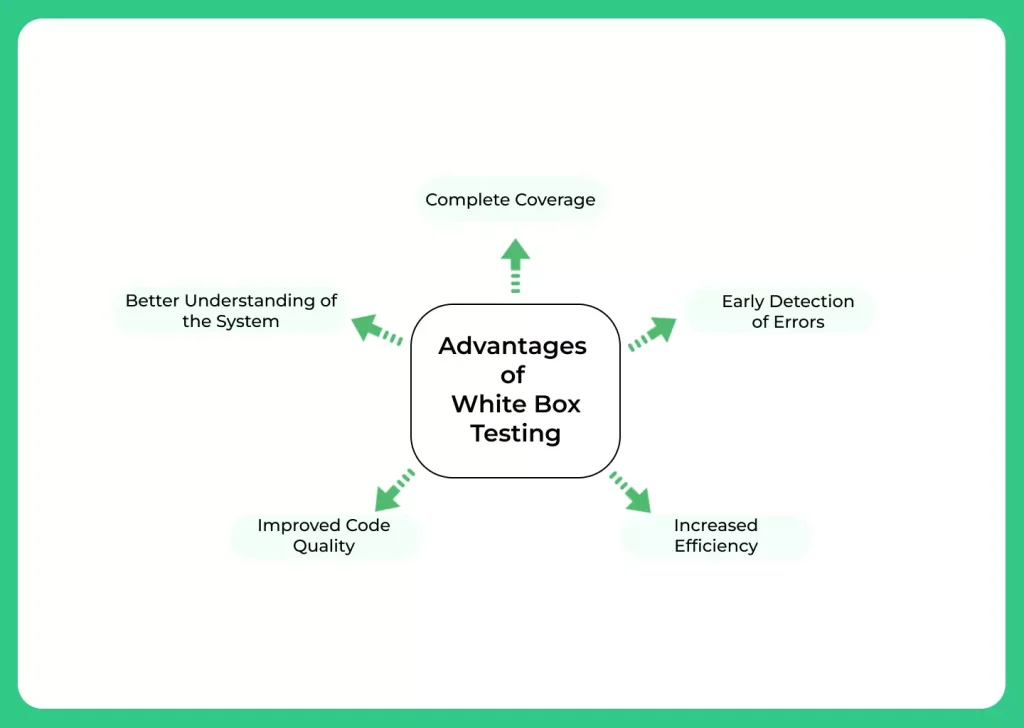White Box Testing in Software Engineering
What is White Box Testing?
White Box Testing in Software Engineering, also known as structural testing or glass box testing, is a method of testing software in which the internal structure and design of the code being tested is known and used as the basis for creating test cases.
This type of testing focuses on verifying that the code functions as intended and that all statements have been executed, as well as checking for compliance with programming standards and identifying potential bugs or vulnerabilities.
It can be done by developers or testers, and it is usually done in combination with black box testing, which tests the software from the user’s perspective without knowledge of the internal structure.

Image of White Box Testing in Software Engineering

Types of White Box Testing in Software Engineering
White box testing is a type of software testing that examines the internal structure and design of a program or application. The following are some common types of white box testing:

1. Unit testing:
Tests individual units or components of the software to ensure they function as intended.
2. Integration testing:
Tests the interactions between different units or components of the software to ensure they work together correctly.
3. Functional testing:
Tests the functionality of the software to ensure it meets the requirements and specifications.
4. Performance testing:
Tests the performance of the software under various loads and conditions to ensure it meets performance requirements.
5. Security testing:
Tests the software for vulnerabilities and weaknesses to ensure it is secure.
6. Code coverage testing:
Measures the percentage of code that is executed during testing to ensure that all parts of the code are tested.
7. Regression testing:
Tests the software after changes have been made to ensure that the changes did not introduce new bugs or issues.
Prime Course Trailer
Related Banners
Get PrepInsta Prime & get Access to all 200+ courses offered by PrepInsta in One Subscription
Techniques of White Box Testing in Software Engineering
There are some techniques which is used for white box testing –
1. Statement coverage:
Statement coverage is a testing technique in which tester traverse all statements and ensure that each statement of the code is executed at least once. Hence each line of the code is verified.
2. Branch Coverage :
Branch coverage is a technique used for testing in which test cases are designed so that each branch are tested at least once. This technique analyse every possible ways of the system.
3. Path Coverage :
Path Coverage is a software testing technique where all possible paths are defined and covered .paths are executable statements from entry to exit points in the system. It’s a time-consuming task.
4. Loop Testing :
By using this strategy, independent and dependent code loops and values are tested. Errors often occur at the beginnings and ends of loops.This strategy related to testing loops –
- Simple loops
- Nested loops
- Concatenated loops
5. Basis Path Testing :
In this basis path testing technique, control flow graphs are made from code and then Cyclomatic complexity is calculated. cyclomatic complexity defines the number of independent paths so that the minimal number of test cases can be designed.
Focus of White Box Testing in Software Engineering
Following are the points on which white box testing focuses on:
- Examines the actual code structure.
- Tests decision-making parts like “if-else” statements.
- Ensures loops function correctly under various conditions.
- Checks all possible paths through the software.
- Verifies proper error handling and prevention of crashes.
- Identifies and fixes security vulnerabilities.
- Optimizes code for better performance and efficiency.
Advantages of White Box Testing

Disadvantages of White Box Testing
Conclusion
White box testing plays a crucial role in software engineering by ensuring that the internal code of software is correct, efficient, and secure. It allows developers to thoroughly examine how the software works, catching errors that might not be visible from the outside. By focusing on the internal structure, white box testing helps create reliable, high-quality software that performs well in real-world situations. It’s an essential step in building software that users can trust.
FAQs
Yes, it can be automated using tools like JUnit, NUnit, or PyTest. These tools help run unit tests on internal logic and check code behavior automatically.
It allows testers to analyze code for vulnerabilities like buffer overflows or SQL injection. Since internal structures are visible, flaws can be detected early.
Loop Testing is a technique that focuses on validating different kinds of loops in the code. It ensures that loops function correctly across all iterations, including edge cases.
It can’t catch missing functionalities since it focuses only on what’s present in the code. Also, it can be time-consuming and requires skilled developers.
Get over 200+ course One Subscription
Courses like AI/ML, Cloud Computing, Ethical Hacking, C, C++, Java, Python, DSA (All Languages), Competitive Coding (All Languages), TCS, Infosys, Wipro, Amazon, DBMS, SQL and others



Login/Signup to comment